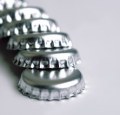 Reduce, re-use, and recycle. Just one of the countless mantras of the twenty-first century that we are told will save the planet. Of course, my grandmother used to put it far more succinctly and in a much more accessible form: waste not, want not.
Reduce, re-use, and recycle. Just one of the countless mantras of the twenty-first century that we are told will save the planet. Of course, my grandmother used to put it far more succinctly and in a much more accessible form: waste not, want not.
Now, we have carbon footprints, emissions targets, and landfill directives, that are meant to govern what we should be doing in order to mitigate environmental devastation. Of course, we try to reduce our consumption and I encourage everyone to sign up to the 10:10 campaign or its local equivalent where you are.
If you can, get hold of, or borrow an energy meter that gives you a display of your electricity consumption and lets you home in on hidden waste, specifically those devices on standby that you should really switch off at the outlet. I’m even trying to convince the rest of my family, who should know better given grandma’s mantra, that we should be cutting down on waste and turning out lights, boiling only enough water, and avoiding car journeys when we can.
But, then I read about the trillions of plastic bags produced each year, the billions of drinks containers, and all those incandescent light bulbs that are suddenly redundant thanks to new laws aimed at reducing energy consumption and forcing us to switch to compact fluorescent tubes…are our miniscule efforts worth it in the face of such environmental threats?
What about metal bottle tops, every liver-defying beer we crack open, every tooth-rotting cola drunk, usually means a glass bottle and a bottle top? The glass is relatively easy to recycle, unless its brown or green, in which case it will most likely be crushed for hardcore for building roads. The crown cap is a mixed metal product usually with a polymer layer and paint, so not quite so easy to extract and recycle, at least until now. Currently, the recycling processes for metal bottle tops work through millions of tonnes but are inefficient, wasting energy and losing a large amount of the metal. Moreover milling and grinding affect the metal morphology in a detrimental manner making further processing of the material into a useful form difficult.
Mahmoud Rabah of the Chemical and Electrochemical Laboratory, at the Central Metallurgical R&D Institute (CMRDI), in Cairo, Egypt, and his colleagues are working towards a method for recycling metal bottle tops that could take this huge problem out of the waste equation and provide a source of recycled aluminium.
Rabah explains that standard magnetic extraction allows iron tops to be separated from aluminium tops and once melted with a flux material (sodium borate-sodium chloride mixture), other impurities can be scraped off by flotation techniques, the team explains, and hydrochloric acid leeches out the aluminium. Paint breaks down to titanium dioxide on heating at 750 Celsius for just half an hour. The team then found that they could create standard aluminium alloy by addition of a primary master alloy and so recover almost all (96.8%) of the aluminium from a bottle top waste stream. Sounds like a plan to me, but…
…there always remains the problem of balancing the energy books. The extracted aluminium alloy is valuable, certainly. Recycling aluminium from the cans themselves as opposed to bottle tops uses about 5% of the energy needed to extract virgin aluminium from bauxite, the mined aluminium ore. But, recycling aluminium bottle tops may not be quite so energy efficient and further studies are now needed to discover whether it will not only be commercially viable but whether the extraction is environmentally sensible. There may be some other less energy-intensive way to reuse waste bottle tops, after all.
I asked Rabah about the issues and he told me that discussions have been started with the three foreign companies working in Egypt that collect, sort and sell household waste in the greater Cairo region. One of the first problems they face is how to sort the 18-tonne sample batches because facilities do not yet exist to carry out this critical task. Manual separation has been suggested but that is practically very tedious and labour intensive.
However, with grandma’s mantra in mind, finding a way to make the endless stream of waste bottle tops, and those already in landfills across the globe, a viable source of metal should be found. Think about it, landfills packed with metals, plastics and other commodity materials, albeit in impure and mixed forms, could become the mines of the future once extraction techniques are made economically and energetically viable.
![]() Mahmoud A. Rabah (2009). Recovery of aluminium alloys and some valuable salts from spent bottle covers Int. J. Environment and Waste Management, 5 (1/2), 194-210
Mahmoud A. Rabah (2009). Recovery of aluminium alloys and some valuable salts from spent bottle covers Int. J. Environment and Waste Management, 5 (1/2), 194-210